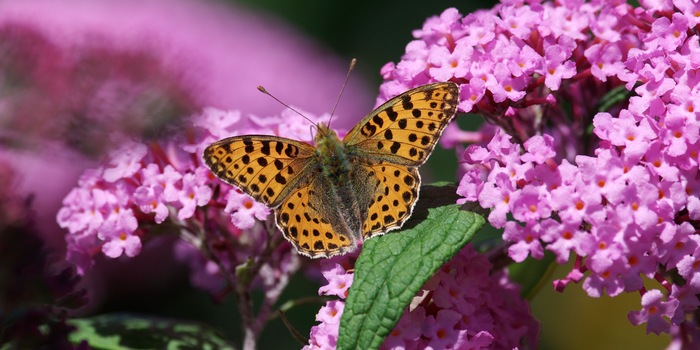
Habitat: Climate change drives butterflies to higher altitudes
Researchers have analysed the distribution of around 119 butterfly species in the Austrian province of Salzburg over a period of 70 years. Since the beginning, their habitats have shifted more than 300 metres uphill - the increases have been particularly marked since the year 2000.
Climate change is not only threatening biodiversity, it is also making a decisive contribution to the shifting habitats of animals and plants. Using around 30,000 butterfly and hawkmoth records, researchers were able to track changes in the habitats of 119 species in the Austrian province of Salzburg. The results, published in the journal "Science of the Total Environment", show that the butterflies have moved uphill by an average of more than 300 metres over a period of seven decades - from 510 metres above sea level in the early decades to 819 metres in recent years. This corresponds to an annual height shift of 4.5 metres. There have been particularly significant increases since the year 2000, and the researchers assume that the species initially buffered the changes in climate, but reacted to further climatic changes and moved to higher, cooler regions.
"We found that the mobile species in particular, which are still widespread, react to the climatic changes," says Thomas Schmitt, Director of the Senckenberg German Entomological Institute. In contrast, very specialised species are usually quite loyal to their location. "They are trapped in their habitats, as the intensively managed landscape hardly allows these species to migrate," explains Thomas Schmitt.
This confirms the observation that adaptable and mobile species with a broad ecological spectrum are better able to cope with the changes caused by climate change than specialised and sedentary species. As it turned out, the distribution of butterflies in the higher areas became more even in 76 species over time. It is therefore possible that the animals have adapted better to the new altitudes in recent times. However, a restriction of the distribution range at higher altitudes was observed in 68 species.
The authors of the study point out that the retreat from the low-lying regions of Salzburg may not be exclusively due to climate change, but also to the fact that high-quality habitats are being destroyed by intensive agriculture, settlement areas are expanding and industry and transport are on the increase. The shifts in the upper distribution limits of butterflies, on the other hand, are solely due to the climatic changes of recent decades. "This finding emphasises the urgent need to manage the landscape more ecologically and create more nature reserves to enable these species to adapt to climate change," says Jan Christian Habel from the Paris Lodron University of Salzburg, lead author of the study.
Spectrum of Science
We are a partner of Spektrum der Wissenschaft and want to make sound information more accessible to you. Follow Spektrum der Wissenschaft if you like the articles.
[[small:]]
Cover image: Shutterstock / Cuhle-Fotos
Experts from science and research report on the latest findings in their fields – competent, authentic and comprehensible.